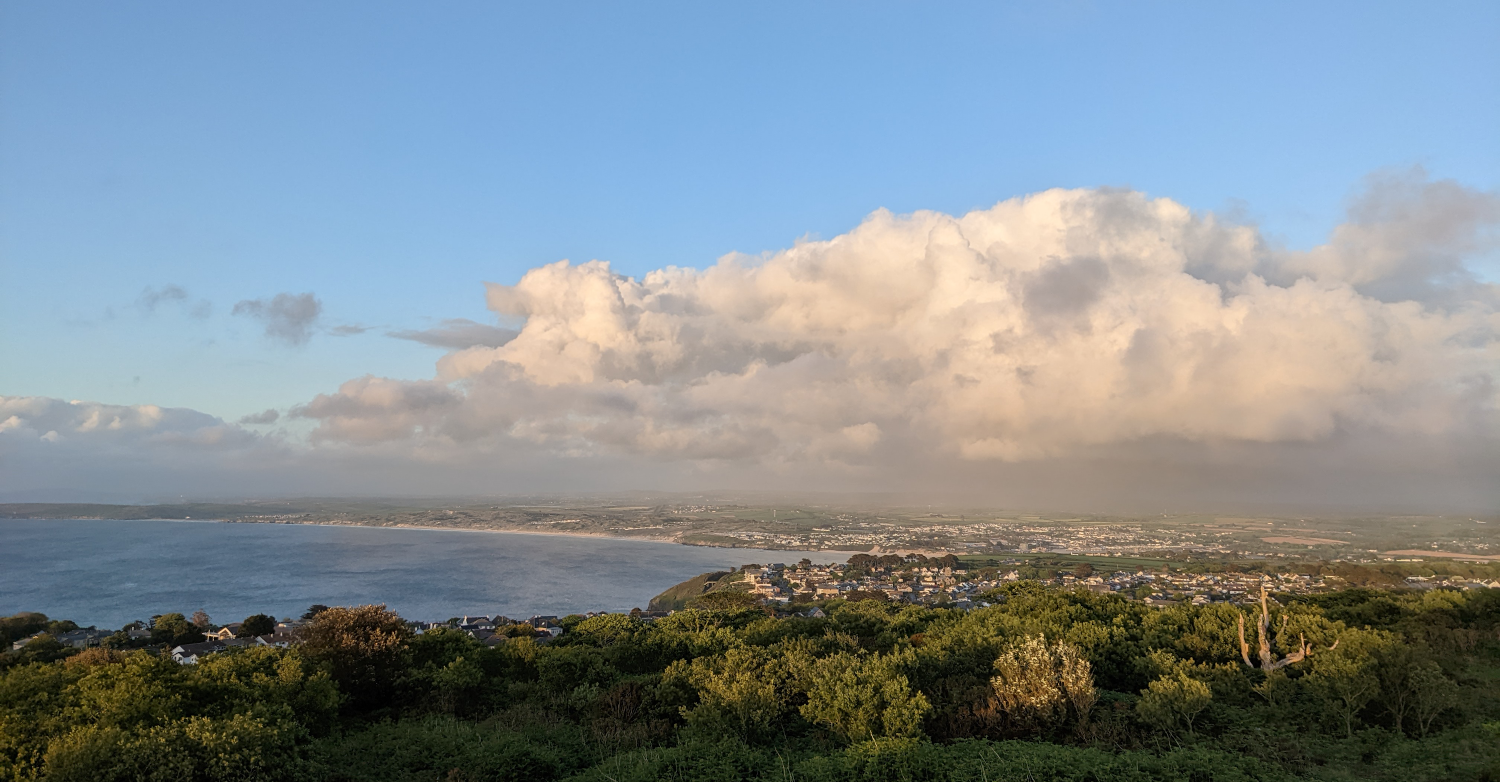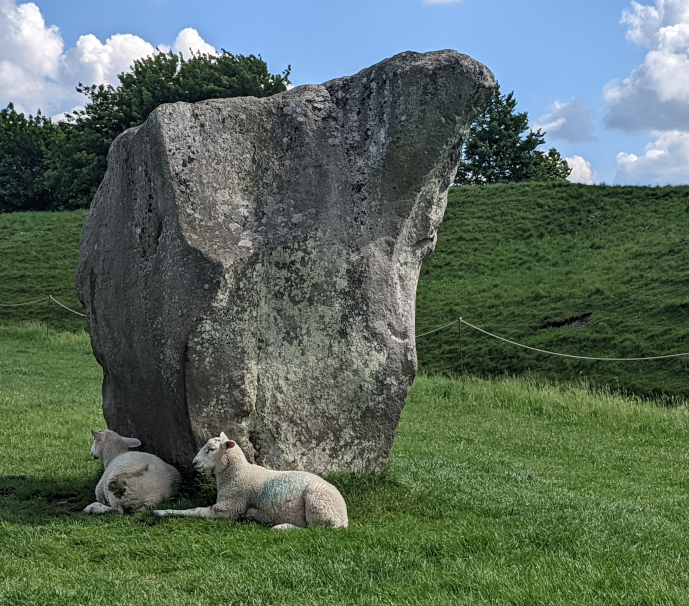
A long while back, long before we started on this trip, we decided that planning an entire year of travel was unreasonable. Especially given the ever-changing COVID restrictions, there were simply too many variables to anticipate. Weather could change unexpectedly; geopolitical conflict could suddenly ignite; someplace else could just seem more interesting. So we settled on a simple strategy. We would pick a few things that we knew we wanted to do and then fill in the gaps as we went along.
As our time in Greece drew to a close, we found ourselves on the brink of one of those gaps. This one had some particular constraints. First, in mid-June we would head to India. This meant that we didn't want to go too far afield to avoid paying an expensive plane ticket to India. Second, later in the summer and fall, we would be spending time in Europe. This meant that we needed to be careful about spending too much time in the Schengan area, because visa restrictions mean that we only have 90 days of time in Schengan area countries available to us. Third, it happens to be the start of the rainy season over a large swath of Asia.
One day, Alexa was looking at a list of multi-day hikes and came across one in Scotland that made both of us stop and dream: the West Highland Way.
It's a 96-mile hike starting just a little north of Glasgow, and ending in the town of Fort William. Along the way are incredible views of Scottish lochs, rolling hills, and quaint towns and villages. It is truly the highlands. As the Way passes through a little over a dozen towns, our days on the trail can start and end in a town with a bed and a meal. This significantly cuts down on the amount of gear required, which is important given we are not traveling with camping equipment.
We haven't hit the trail yet, but we will soon, in early June.
In the Meantime...
So we had an idea and leaned into it, booked nights in towns along the trail and settled how we would spend that one week. But that still left about four weeks unaccounted for. What to do? Explore the UK, that's what to do.
Turns out, there's quite a lot to the UK, though. Just deciding on a country only cuts options down so much.
A few people, notably Alexa's sister, suggested that the Greenwich Observatory was the place to be, so we hopped on a train and made our way to Greenwich. It was a very short ride from where we were staying in London and gave us immediate envy for Britain's public transportation. I mean seriously, it's amazing. You can get nearly anywhere by train and it doesn't take an unreasonable amount of time or money to do so. And for that last mile from the train station to wherever you're staying, you can bet there's a bus that will get you there. Come on, America, you can do better.
At any rate, we made it to Greenwich. The observatory is a set of two smallish brick buildings on a low hill overlooking London. It's a remarkable view. In the foreground, bordered by the river Thames, is a wide open green space and the colonnaded Queen's House. In the background sprawls the City of London, St. Paul's Cathedral looming large. It's an interesting point of connection to the Observatory since both were originally designed and built by Christopher Wren.
There's a lot ot learn at the Greenwich Observatory and I won't bore you by reciting it all here. But I will say that it was very cool to stand on the Prime Meridian and learn about why the Prime Meridian even exists. There's a wikipedia article that explains it in much more depth than I am willing to do, but the basic problem which Greenwich Observatory was meant to solve was that navigators out at sea had no reliable way to determine what longitude they were at, which was resulting in a lot of shipwrecks.
In order to do so, you need a fixed reference point, a line which represents your starting point, your 0th degree. And you also need to know what time it is at that reference line. The observatory thus arbitrarily created a 0th degree line called the Prime Meridian and began to create a book mapping the positions of the stars to times at Greenwich. When the work was complete, a navigator could look at the stars and, by referencing the book, determine what time it was at Greenwich. They could then determine what time it was at their current location by various other means and deduce their longitude based on the difference between those times. As it so happens, this is also the origin of our current time zones.
For Queen and Pasty
With a few days available to us until our next stop, we decided to explore the southwest of England a bit. So once again we hopped on a train and made our way out of London. Our next stop: St Ives, Cornwall.
St Ives is a very pretty beach town nearly at the southwestern tip of the country. Its famous sunsets inspired generations of artists to visit or live there and work. In particular, it's the home of a number of accomplished Modern Artists, and it has a very nice, if small, museum dedicated to them.
Alexa found us a very cool glamping hut a short walk out of town atop a wide hill. From there, we had spectacular views every morning of the wide open sea before us. A five-minute walk away brought us to a tall stone plinth known as Knill's Monument which has even more incredible views. From here we could see a long stretch of coastline on the one side, including St Ives and a couple other coastal towns, and sprawling pastoral farmland on the other side. We made our way there for sunset on our first night and immediately understood why this place is so special. Golden light bathed the world and dramatic shadows played across the land. The wind whipped fiercely around the corners of the monument, putting our Greece-softened tolerance of the cold to the test. Tea mugs firmly in hand, we stuck it out for those final moments as the sun lowered itself below the horizon.
The next day, we gorged ourselves on sea views and Cornish pasties. We ate and walked and looked about. We sat on a beach and did our best to paint the scene with some watercolors we'd picked up in Greece. At the end of the day, we climbed a hill at the end of the town to an old stone building by a lighthouse and watched some local performers play their music. It was a lovely way to spend a day.
On Big Stones and Hot Water
It was time to get on the train again. We watched the countryside roll by once more, St Ives Bay giving way to open fields and hedge rows, slate-roofed houses and sheep. It took 5 hours, 3 trains, and a half hour of walking up hills, but we made it to the city of Bath. I'd heard from several friends that this was a city worth visiting and, as it was somewhat near to Stonehenge, we thought maybe it would be a good base for a day trip.
Our host was a friendly older couple who had traveled through America staying at Airbnbs and became inspired to be hosts themselves. One thing that has stood out to me in the UK is that, in contrast to the US, the Airbnb hosts we've had have been far more interested in being good hosts than in running some sort of commercial operation. They've all been friendly and kept the relationship personal. As one of our hosts, John, showed us to our room, he very happily chatted with us about how he loves having guests and showing them around Bath. It's a warmth that I've come to really appreciate.
John had some recommendations for us too. First, multiple visitors had told him that visiting the Roman Baths was absolutely worth it. Second, his visitors had generally been more impressed by Avebury than by Stonehenge, but he would help us find a way to visit Stonehenge (apparently, the previous bus route to Stonehenge had disappeared).
Naturally, we started our first day in Bath by spending our morning at the spa. We may be trying to travel cheap, but this felt like a luxury not worth passing up. And indeed, it was very nice. There were multiple steam rooms, a sauna, a heated indoor pool, and a heated rooftop pool with views of the city. (By "heated" I mean naturally, geothermally heated.) We floated, we sweat, we luxuriated. It was wonderful.
In the afternoon, we visited the Roman Baths. I won't dive into all the details here as it would take too long, but I agree with our hosts' previous visitors - it was worth it. We spent a couple hours there reading all the signs that we could handle reading and left only because we were quickly running out of time before I had to be back for a meeting. One cool factoid that I hadn't realized: the people living in the area before the Romans arrived already had fairly advanced societies that were conducting trade with mainland europe via boats. It feels obvious in retrospect, but my view of those peoples was so clearly inaccurate and it surprised me.
The next day, we went to Avebury. After a great deal of consideration, we passed on Stonehenge. Will we regret it later? I hope not and I think not. Points in Avebury's favor:
- It is the largest megalithic circle in the world and has the largest henge stone in the world.
- The site pre-dates Stonehenge by about a thousand years (though the stone circle itself wasn't set up until around the same time as Stonehenge).
- You can actually walk up to the stones and touch them.
- There are sheep grazing all around. Sheep are cute.
- In the center of the stone circle is the town of Avebury, complete with a pub. You can enjoy a pint with your henge.
- It's cheaper to get to; just take the public bus. It's also free to visit the stones themselves.
Points in Stonehenge's favor:
- The way they stack the stones is cool.
- It's origins are more mysterious.
- There is more signage and tourist infrastructure.
- It's one of Those Places. You know, the ones You Just Have To Visit.
At the end of the day, I would never tell anyone not to visit Stonehenge. But I would absolutely recommend them to visit Avebury. There's a small museum right by the stones too, so anyone who feels they are missing out on informational signage need not worry.
I mean, just look at these happy little guys. How could you resist?
